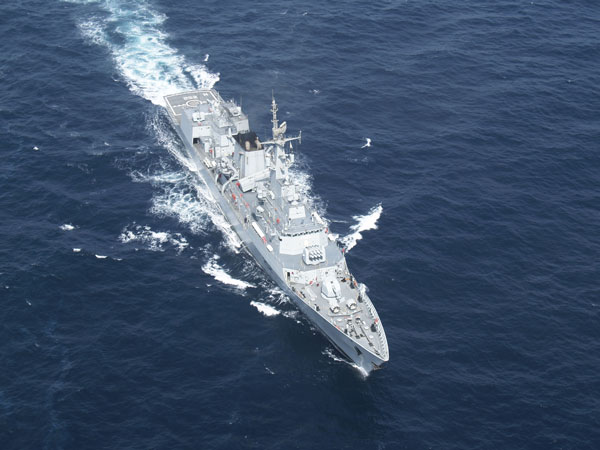Sohail A. Azmie
STARTING its journey with two frigates and four minesweepers, in 1947, Pakistan Navy came of age to become a reckonable naval force in the region. Unfair distribution of naval assets at the time of partition had left Navy in an extremely difficult position to start its capability development. Much of the warfighting, training and logistics infrastructure was retained by India, in clear contradiction to the proposals of Armed Forces Reconstitution Committee, established under Gen Auchinleck, which decided to distribute the naval assets between India and Pakistan with a 2:1 ratio. The final distribution that actually took place was way too off this ratio (somewhere close to 5:1 in fa vour of India), letting Pakistan Navy face a daunting task to begin everything from scratch.
vour of India), letting Pakistan Navy face a daunting task to begin everything from scratch.
The Navy began its infrastructure development from 1950s with the setting up of Dockyard and naval training schools in Karachi. Submarine acquisition program commenced during that time with efforts to get British and Swedish submarines but it wasn’t until the Navy was successful in acquiring a Tench Class US submarine in 1964. Procurement of destroyers and minesweepers had also been in the major acquisition plans of the Navy. Meanwhile, exercises and cruises were held to develop better interoperability of the new Navy with other navies of the world. In 1950, HMPS Sind visited Saudia, HMPS Tipu Sultan visited Turkey, and HMPS Shamsher visited Indonesia, Australia and New Zealand. Amphibious warfare exercise was conducted in October-November 1951 with ships from Pakistan and the UK. Amphibious landing was conducted on Clifton Beach on 5 November 1951, where 3rd and 8th Punjab Regiment units on the beach.
Pakistan Navy continued its upward journey but it wasn’t without jolts, blows and surprises. Besides the ‘partition shock’, Pakistan Navy had to sail throughsome turbulent waters that affected its road to progress. On the eve of passage of Pakistan’s first constitution in 1956, the Navy’s seniority was relegated to the second spot behind Army, signifying the governmental focus it would get for the time to come. Necessary funds, needed for the Navy’s growth, were hard to come by in earlyto mid-50s. At that time it had largely been assumed that the sea hadn’t figured significantly in economic and national security of the country because of a long land border with India and agrarian-based economy. This gave rise to what may now be termed as ‘land-locked thinking’ or the ‘continental mindset’. Some authors prefer to use the term ‘Sea Blindness’, which reflects a condition where importance of the seas is grossly ignored because of lack of maritime awareness. In the same vein, the sea blindness could also overshadow the role of the Navy it plays at military and diplomatic levels.
Steadily, as it appeared, the Navy kept consolidating from every available resource that it could muster to become a dependable force. This track can be seen through four ‘points of inflection’ that immensely impacted the Navy’s outlook, both in size and doctrine. The first of these points of inflection is Pakistan’s joining of SEATO and CENTO, during the Cold War, which afforded the Navy to have American vessels and weapons. This event heralded a new era where Pakistan Navy had a superior edge over India in anti-ship and self-defence weapons. Induction of Garcia and Brooke classes of frigates, in 1989, enabled the Navy to maintain a formidable surface Anti-Submarine Warfare (ASW) capability that considerably deterred the Indian subsurface combatants to ingress into Pakistan waters.
The second point of inflection on the development curve of the Navy occurred when it had to return the Brooke and Garcia frigates to the United States upon expiry of lease (5 years from 1989 to 1994) because Pakistan’s request to turn the lease into acquisition was declined by the Bush government.










